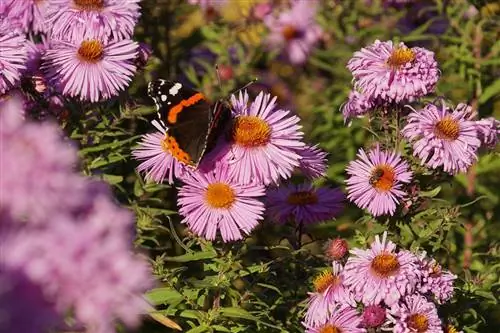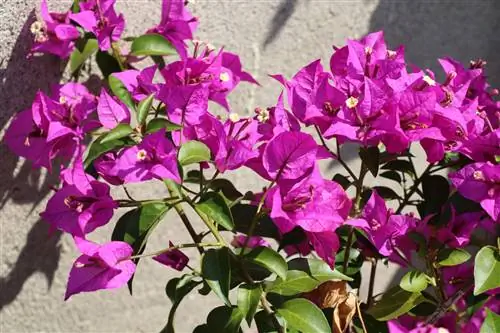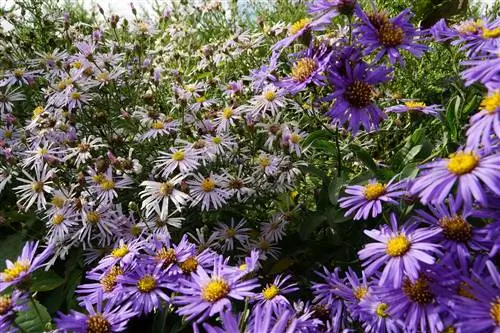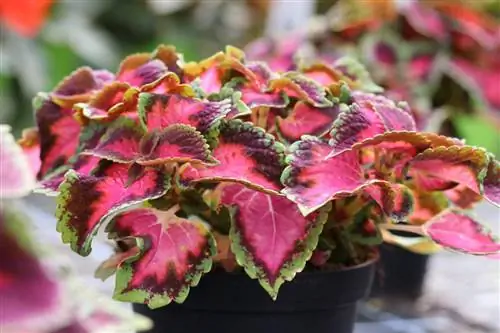- Author admin [email protected].
- Public 2023-12-17 03:39.
- Last modified 2025-06-01 06:48.
The summer aster and the autumn aster couldn't be more opposite in terms of winter hardiness. The variety determines whether a specimen can even survive the frost of winter. If so, it may still make sense for the owner to take a few protective precautions.
Summerstars
The summer aster (Callistephus chinensis), like the autumn aster, belongs to the daisy family (Asteraceae). However, it represents its own genus. The origin of this summer bloomer lies in East Asia, where the plant has been cultivated for 2000 years. It is not a perennial, but an annual species that is not hardy. Regardless of the climate, there is no chance of keeping them for several years. All winter protection measures would be a waste of effort for her. Only the plant remains that were received in autumn are removed from the garden bed.
Delaying the end of life
You cannot save asters of this genus from dying at the end of the season. But you can extend your life a little.
- choose a location protected from the wind
- cover with fleece or jute in autumn
- Put pots on the house wall
- best under an eaves
Tip:
If you cultivate summer asters in pots, you should avoid placing them on the balcony, especially in autumn. It may be warm there, but most of the balconies are also very fast.
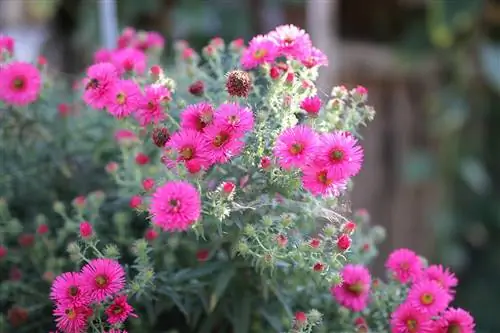
Autumn Taster
The autumn aster, botanically aster, is hardy. It is perennial and overwinters outside. In the cold season, however, their strength rests in the root area, while the above-ground parts of the plant die. The autumn aster is a collective term for various species whose long flowering period until the last day of autumn led to the name being given. The individual species have a slightly different winter hardiness, but this is always sufficient for our climate zone.
| Wild asters | -23 °C |
| Bergastern | up to - 28 °C |
| Alpine Asters | - 40°C |
| Cushion Asters | - 40°C |
| Rough leaf asters | - 45°C |
| Smooth leaf asters | - 45°C |
Winter protection measures
Even if the autumn asters are perennial and have a strong winter hardiness, there are some cases where winter protection measures make sense because they help the asters to overwinter more safely. The owner should protect all potted plants as well as outdoor specimens that grow in particularly harsh areas or that are predicted to have a harsh winter.
Cover root area
The root area of autumn asters that remain in the flower bed should be warmly covered before the first frost. The covering layer should be generously thick and can consist of one of the following natural materials:
- Compost
- Bark mulch
- brushwood
- Fir branches
Leave dried leaves until spring
Gardeners who like to leave their flowerbeds tidy for the winter will probably have a bit of trouble with this tip. But the advantages are clear. The dried leaves keep cold and moisture away from the root ball. That's why autumn asters should overwinter with their own natural winter protection. Only in spring, shortly before new growth, should you cut back the old shoots just above the ground.
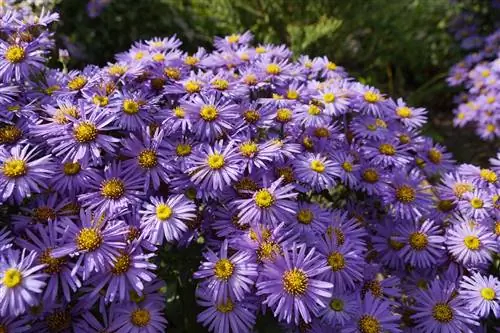
Place potted specimens in a safe location
Root balls of autumn asters that are rooted in pots freeze faster. However, the plants are not allowed to overwinter in a warm house. What you can do is find them the best possible spot outside. Place the pot close to a house wall, preferably in a south-facing location. If it rains a lot in your area, a location under a eaves is ideal. However, you must make sure to water the plant every now and then. Even in potted specimens, the old leaves should remain on the plant until the end of wintering.
Wrap the pot with fleece or jute
Although it is not absolutely necessary, it is certainly useful if you wrap the pot of an aster with jute or fleece before the first frost. Also place the pot on Styrofoam or wood.

